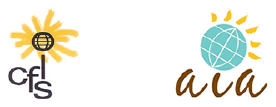Dr. Margaret Jackson, Associate Professor, UNM
December 2, 2018
If pyramids could talk what might they tell us? Over a span of 800 years or more, the Moche people of Peru’s north coast created dazzling works in precious metals, textiles and ceramics, leaving behind an extensive corpus of vivid pictorial imagery. Likewise, Moche pyramids, some of the largest adobe constructions in the ancient Americas, were elaborately decorated with enormous colorful murals depicting related themes. In small arts and writ large on monumental scale, the visual records points toward human sacrifice, political glorification, performance of religious rituals. How do archaeology and artistic analysis combine to help us understand what actually happened in these remarkable places? Focusing on major mural cycles at the Huaca de La Luna/Pyramid of the Moon, and related materials from the Royal Tombs of Sipan and other sites, this talk will address these questions and highlight the speaker’s personal investigations of Moche art.
Margaret Jackson, PhD is a scholar of art and visual communication in the ancient Americas and is a specialist in Moche imagery and iconography, she received her doctorate in Pre-Columbian Art History from the UCLA. Previous research in Peru focused on ceramic production at the site of Cerro Mayal in the Chicama Valley, and the Huaca de La Luna at Moche. Additional research interests include the visual cultures of ancient Mesoamerica and studies of notation and visual literacy. She is an active member of the College Art Association, the Institute for Andean Studies, the Society for American Archaeology, and currently, the President of the Association for Latin American Art. She is a former Faculty Fellow at the Stanford Humanities Center and a Cotsen Fellow with the UCLA Cotsen Institute for Archaeology. Her publications include a volume, Invasion and Transformation: Interdisciplinary Perspectives on Images of the Conquest of Mexico (2008), and a recent book, titled Moche Art and Visual Culture in Ancient Peru (2008).
Supported by Urban Enhancement Trust Fund, Haverland Carter Lifestyle Group
and Sandia Laboratory Federal Credit Union
